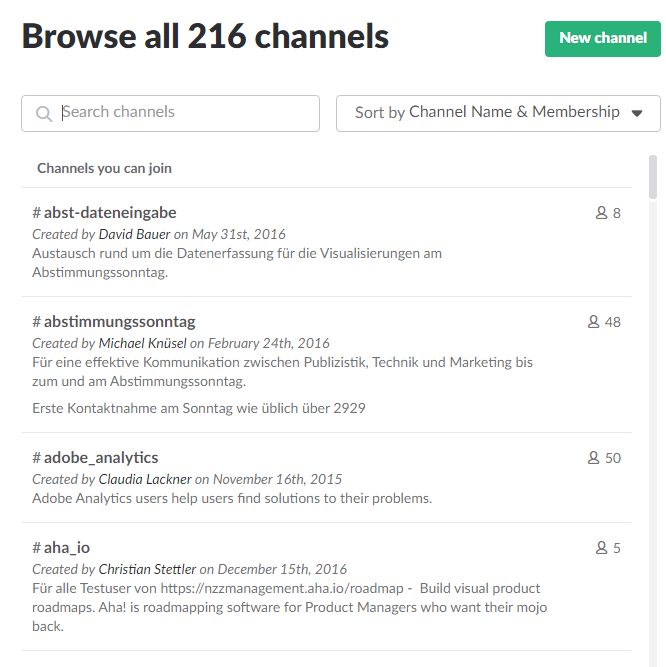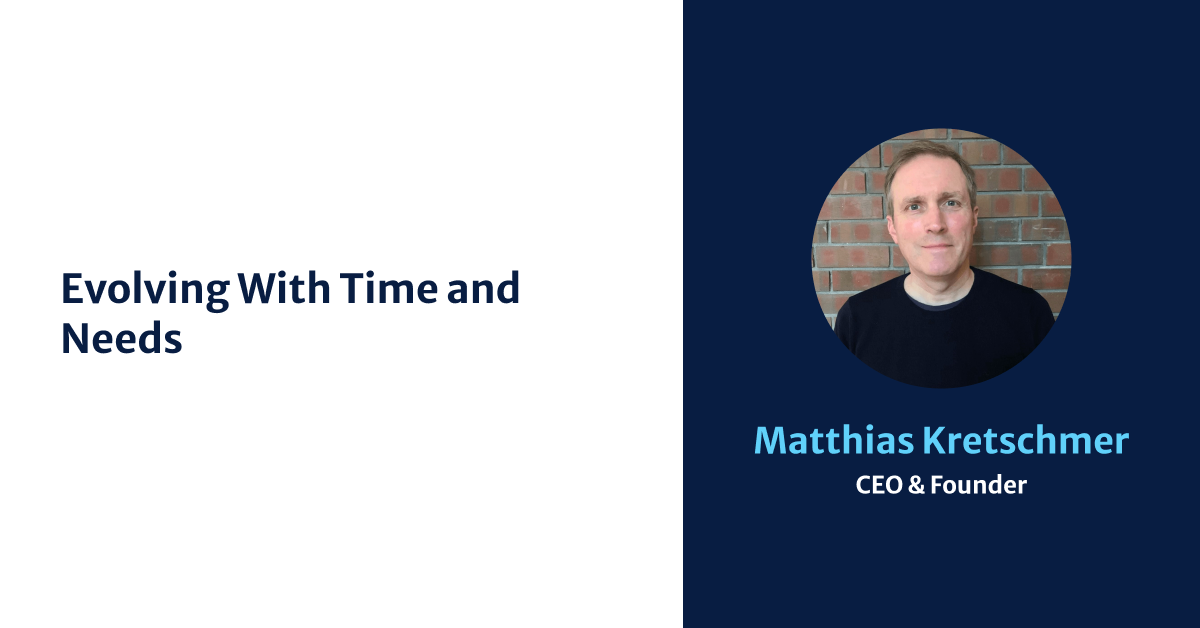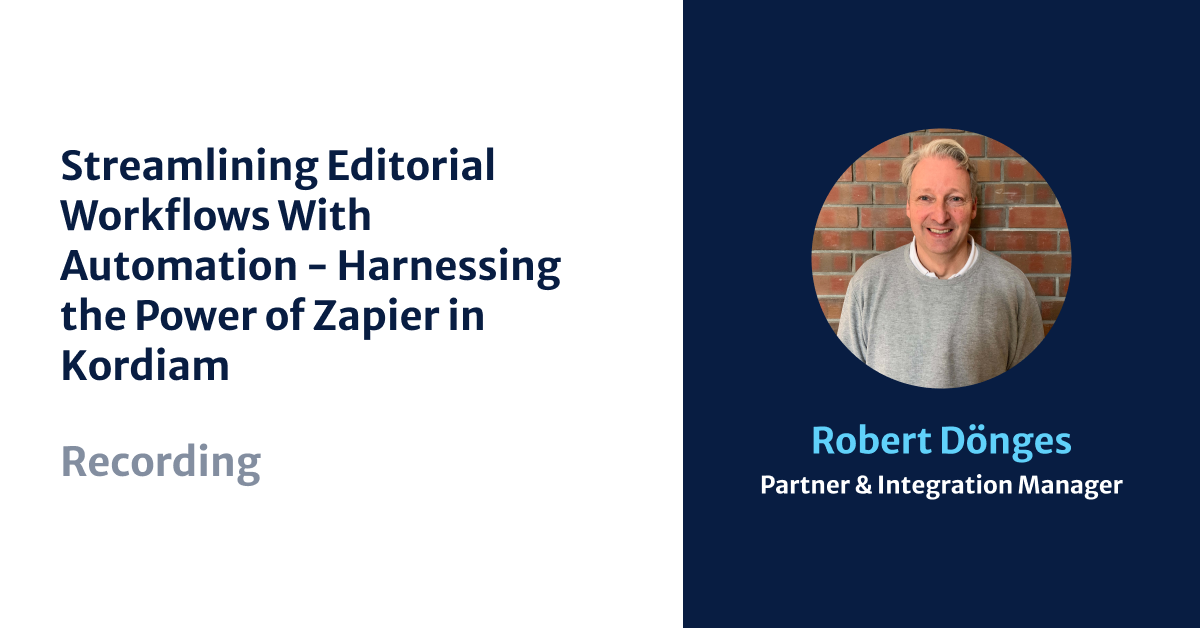How Slack Is Reshaping Editorial Coordination
Our office in the cloud", "where work happens”, “chat on steroids”, “the new water cooler”
All of these are ways that Slack users have described the newsroom tool to media Consultant Marian Semm. “For some it is even the central tool replacing the CMS” declares Semm, who went from a newspaper background into specialising in media technology.

To explain a little about how a simple chat tool can become 'where work happens' Semm told Editorial Days 2017 about a dinner he once had with colleagues working on other projects.
“One of them was scanning his phone constantly – and not unusually – but then he suddenly relaxed. We asked what had happened and he told us that he was working on a major version release and had just been following the conversation between the developers on Slack. It clearly fulfilled his control-mania but in a way that didn't leave the employees feeling he was watching over their shoulder.”
The 'what'
Even if you are unfamiliar with Slack, the chances are that members of your publishing team are already using it. The tool itself came about as a by-product of game development, as did Flickr, which came from the same developer (Stewart Butterfield).
On its launch in August 2013, 8,000 customers signed up for it within 24 hours. Semm pointed out that at the time of addressing Editorial Days the user figures for Slack had passed the five million user mark, of which 1.5 million are paid subscribers.
According to Butterfield, Slack is an acronym standing for Searchable Log of All Conversation and Knowledge and it is that searchability (in the paid version) that has proved to be the key to its success in the team environment; “it forms an ongoing repository of knowledge” as Semm put it.
The 'how'
Semm gives the example of the Aachener Zeitung media company.
"In Aachen the daily issue planning session isn‘t a real team meeting any longer. Instead of meeting in person the people in charge have their conversation around the same time in their #blattplanung (flat-planning) channel. No need to meet in person, no boring attendees distracting matters with one on one discussion."
It also gets around the physical limitations of legacy offices. As an editor at Aachener Zeitung explains: "Our building dates from the 1960s. The floor plan does not allow for a large newsroom. We are connecting smaller desks with Slack instead."
According to Semm this handover of content from shift to shift, and from department to department is the classic use for Slack in newsrooms. The Slack chats about production, for example (seen here in the #epaper-Channel of the newspaper) help avoiding duplication and misunderstandings that lead to production errors.
Semm gave an example of daily planning sessions no longer requiring physical attendees but instead being replaced by a scheduled couple of hours in which everyone was present on Slack; with the benefit that everything being said is automatically noted down. From that meeting subgroups break out to discuss details relevant to their particular tasks.
Semm explains that in the NZZ newsroom in Zurich, Slack takes a lot of the 'noise' out of the newsroom; “It frees us from the burden of email” said one (Butterfield described email as a 'cockroach').
“It turns work into an ongoing conversation” was another comment. “It helps to assess who is working today and from where” said another, and “it makes decisions re-readable and helps with catching up.”
Perhaps most attractive of all was the verdict Semm heard that "it breaks down walls between departments, cultures, work modes, and language codes”
Semm also observed that Slack went further in breaking down boundaries by connecting people with machines in the form of bots that can be created to answer questions and aid workflow.
Semm quoted Owen Thomas, Business Editor of the San Francisco Chronicle explaining that “users are interacting with software bots in much the same way as they chat with colleagues turning work into an ongoing conversation. As bots get smarter the distinction between human co-workers and bots gets less.”
The 'why'
So why, asked Semm, does Slack do so well? There are a significant number of similar tools competing for this market. Indeed Semm identifies all of the following as competitors:
Atlassian Hipchat, Microsoft Teams, Facebook Workplace, Samepage, Semaphore, Narando, Sid, Hall, Asana, SpiraTeam, Zoho Connect, Teamwire, Shalomi, Stackfield, Riot, Skype, Mattermost, Glip, Rocket.Chat, Matrix.org, Let‘s Chat, fluxday, Oinker, gitter, HackChat, YakYak, Campfire, Flock, and Echoplexus.
“You can start out with zero Euros” was the compelling opener to his explanation. “It's simple for beginners but can then be built up to offer rich features. Bots are easy to build based on Google spreadsheets and Slack interacts with many data sources acting as a bridge between legacy and modern systems.”
Tailoring Slack for your team is easy; “You can create a button in Slack that says 'I want this job' and that is signalled to the planning system. Software you have used for years can be turned into a data source for Slack with just one click – notepad, schedulers, diaries, mobile phone apps, they all feature in a catalogue of extensions and 3rd party connectors ... there are hundreds of tools.”
“At the NZZ [Neue Zürcher Zeitung], Slack posts any published stories into a 'latest articles' channel. That way, at the beginning of his shift the editor in charge can scroll back through the previous chat in order to catch up. Reporters can also use it to keep track of whether their stories have been published – including when and where to find them.
Social media staff use it as an incoming news pool they can trawl through to find the best stories for audience development.
Because users are not limited to the number of channels they can dedicate to one-on-one or group conversations this often leads to a large number of channels. The NZZ, for example, has 216 involved in this example.
 “It looks messy,” notes Semm, “but it‘s a good example of an approach where the organization can find ways of cleaning up and fine-tuning over time.”
“It looks messy,” notes Semm, “but it‘s a good example of an approach where the organization can find ways of cleaning up and fine-tuning over time.”
To end Semm recalled a number of direct quotes from Slack users in the newsroom, including:
We significantly reduced the flood of cc-mails,” “other systems do not provide this range of applications”, and “It is much more practical than Skype or Google Hangouts. It combines private channels, open channels, and direct messages on a single platform as well as allowing the simplification of processes through bots and integrations.”
On top of all of which it comes with the reassurance offered by two-step-authentication security.
The relevance of which for a Kordiam audience did not go unappreciated at Editorial Days. The theme of turning all work into an ongoing conversation, of bridging legacy tools and enabling searchable conversations across remote desks and virtual teams fits perfectly with Kordiam's cloud-based scheduling and coordination functions.

